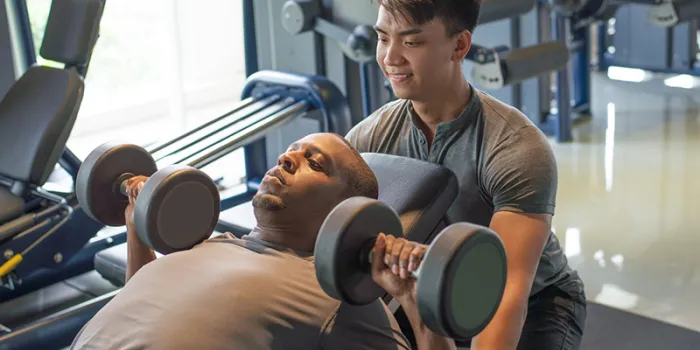Build muscle, and your whole body will benefit. Strength training leads to weight loss, improved heart health, better bone strength and even boosts in mood. Stronger muscles also provide protection against joint bleeds, which makes them an important part of any exercise program if you have a bleeding disorder.
“When you don’t train your muscles, you put so much more pressure, tension and compression on your joints, and that increases your risk of injury,” says Luke Smith, PT, DPT, OCS, CEAS, CSCS, a physical therapist at Thomas Jefferson University Hospital in Philadelphia. “Strong muscles help relieve that burden.”
But don’t dive right into weightlifting. Instead, make an appointment with your physical therapist, who will evaluate your abilities and any special concerns you have. Your PT can then help you develop a suitable program and teach you how to do exercises properly and safely.
Be cautious
Physical therapist Cindy Bailey, PT, DPT, OCS, SCS, encourages her patients to join a gym.
“Your PT can put together a work-out program for you based on your gym’s equipment,” says Bailey, who practices at the Orthopaedic Hemophilia Treatment Center at the Orthopaedic Institute for Children in Los Angeles.
For beginners, Bailey recommends machines over free weights, because machines require less muscle coordination. That makes it easier to do the exercise properly. However, machines work fewer muscles. So, once you develop some strength, add dumbbells, kettlebells or other free weights to your routine.
If you prefer not to join a gym, ask your PT to help you develop a home-based program. You can focus on body-weight exercises like pushups, pullups, lunges and squats. As you get stronger, add elastic resistance bands, cuff weights for your ankles or wrists, and, eventually, free weights.
Building a program
Once you select the best exercises for you, your PT will help you set a reasonable workout schedule. To avoid injury, start with light weights and focus on proper form.
“Your body needs to learn how to put these movements together and adapt to them in order for your muscles to work effectively,” says Smith. That usually takes a few weeks, and you may have some discomfort in the first few days.
At the start, Bailey recommends two moderately easy sets of 10 repetitions, three to four times per week. After the first week, bump it up to three sets. As you grow stronger, slowly boost the difficulty, but increase only one variable at a time: the weight, the number of reps or the number of sets.
Also, if you’re new to weight training, begin with just two different exercises at a time, says Bailey. For example, do two upper-body exercises on one day. The next day, do two lower-body exercises. Your PT may decide you can handle more, but don’t push yourself beyond your PT’s recommendations.
Strength training is a safe exercise, if performed properly. However, both Bailey and Smith say to avoid power lifting, which can invite muscle tears and joint injuries.
Finally, be patient. If you stick with your strength-training program, you will benefit.
“Changes in strength take weeks to happen,” says Smith. “But eventually your body will start to move efficiently, and your joints will be better protected.”

